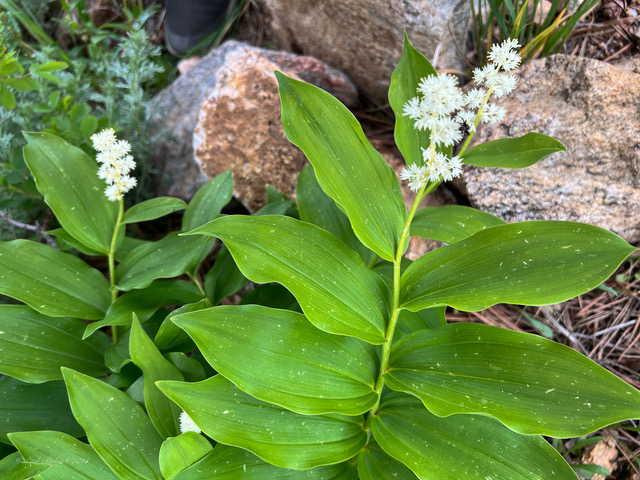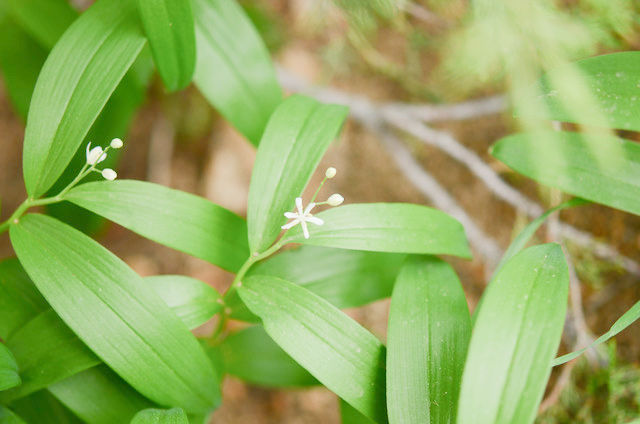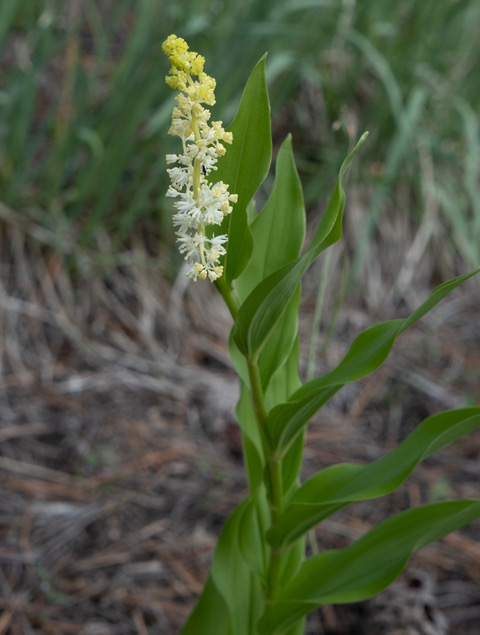People often ask what native plants can be planted in the shade, since most native plants sold in nurseries are adapted to full sun and tolerate hot dry conditions. But most people have some spots in their yard or garden that have some shade, such as under trees or on a north side of a building. These are great places to add diversity and insect habitat as well as to save water.
Oftentimes I see people looking for a shade-tolerant waterwise native plant. But even in nature there are relatively few plants that can grow under these stressful conditions. In our dry climate trees are very efficient at uptaking moisture near the ground. In ornamental gardens it is commonly recommended to add drip water under trees to water plants even when there is regular irrigation to the landscape. This is because of the dry conditions often created by tree roots (and the overhead canopy intercepting rain droplets) in shady spots. One exception to this rule is the evergreen Oregon grape (aka Oregon holly, creeping barberry, creeping Oregon grape, Berberis or Mahonia repens). The tough evergreen leaves of these plants are particularly good at conserving water making it possible for them to survive in these tough habitats. See our blog post A Unique Native Shrub for Shade or Sun: Creeping Barberry
Another approach to native shade gardening is to plant species that can tolerate shade but may need some supplemental water to survive. They should not need much water since they are usually protected from intense sun during the day, depending exactly on where they are planted, so should not dry out quickly. There are many forest species that can be grown this way including ferns, and many perennial wildflowers. In most cases you will have foliage more than flowers during most of the growing season just because of the lack of energy from sunlight in these habitats. So these are plants that are grown primarily for habitat and foliage.
In terms of interesting foliage for shady spots I always think of what used to be called lilies in general, and Solomon’s seal in particular (now in the Asparagus family). “True” solomon’s seal (Polygonatum spp.) in moist deciduous forests in the eastern U.S. and Europe have similar foliage but bell-shaped flowers dangle below the arching stems, and the berries are usually blue when ripe. Our Colorado species do provide spring flowers composed of six spreading tepals (sepals and petals that look the same) and may produce colorful fruits if the conditions are right, so can provide important habitat for insects and birds. There are a number of species in this group, and botanists have changed some of their scientific names over time as we learn more about their history and evolution. So why are these called Solomon’s seal? It turns out for a somewhat obscure reason. The scar on the rhizome left after the season’s annual stem breaks off creates a rounded scar. It is the resemblance of these scars to the two inverted triangles that were the symbol or seal of King Solomon that gave rise to the common name(!). False Solomon’s seal just means it looks a lot like the eastern species but is in a different genus. So I much prefer calling it Solomon’s plume since that at least provides some description of the flowers.
Here in Colorado we have two principle species: starry Solomon’s seal (Maianthemum stellatum) and Solomon’s plume (aka false Solomon’s seal, Maianthemum racemosum). Starry Solomon’s seal occurs at lower elevations and tends to be a smaller more delicate plant, though it can develop tough leaves in some habitats. It just has a few larger white flowers with six spreading tepals on short racemes at the tip of the stem in the spring which will form red berries.
Starry Solomon’s seal starting to flower in spring
Solomon’s plume starting to flower in spring
Solomon’s plume in fruit
Solomon’s plume by contrast is usually a taller plant with a raceme of many smaller white flowers which also give rise to red berries in the summer or fall. Fruits from Solomon’s plume often take a long time to ripen. This year they did not ripen in this habitat at about 7800’ elevation west of Boulder until almost September. Some years they do not ripen at all, often due to drought or other stresses. In this case the berries stay a whitish or brownish color. Both plants can also provide fall color as they turn yellow or brown depending on weather. Flowers are pollinated by small bees, flies, and beetles. Foliage attracts a variety of plant eating insects that can bring in a variety of birds and predaceous insects or spiders.
Depending on weather conditions Solomon’s
seals can develop bright yellow colors in the
late summer or fall. Sometimes with sudden
frost they may just turn brown at end of season.
A wide variety of insects and arthropods
are associated with these plants including
predators like this crab spider (Bassaniana)
These plants are particularly good as ground cover since they spread by sending out a network of underground stems (rhizomes). If conditions are good they can blanket the ground with their foliage and flowers. They are sensitive to disturbance, so you want to let them establish for a few years after planting or moving a clump. In their native habitat along streams at low elevations or in the foothills or mountains they often grow with Oregon grape, ferns, columbine, geraniums, currants, mosses, and other shade-tolerant plants.
Starry solomon’s seal sometimes forms a thick carpet
in moist sites near streams or seeps. This is a low elevation
patch alongside Boulder creek in the city
In the foothills or mountains Solomon’s plume can occur
in more open sunny spots especially if its roots can connect with
water seepages, and moist spots under rocks like these.
These plants tend to grow in rich moist habitats, so in contrast to most native grassland or shrubland species they benefit from adding organic matter to the soil including woody material and mulches. This helps retain moisture and can also develop conditions that should promote the development of more diverse microbial communities. I have had good luck growing them on the north sides of houses in particular or a wet low spot in a landscape. Even in heavily impacted urban areas around Boulder for example I have found a number of spots where you can see starry Solomon’s seal growing alongside streams or rivers. Look for them while hiking along forested streams and shady spots in the mountains.
All photos from the author
Paul Alaback
Professor Emeritus of Ecology
University of Montana
palaback@gmail.com







